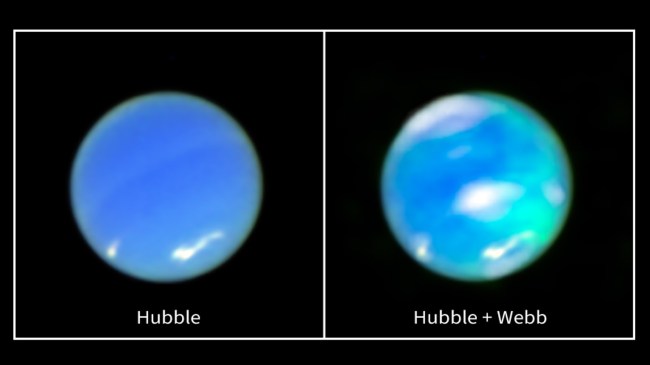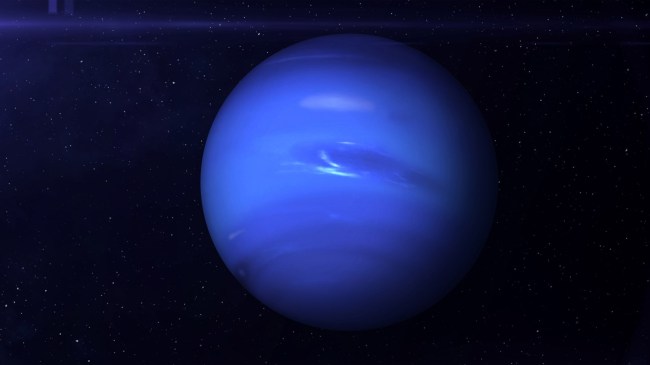iStockphoto
After over 35 years of trying, NASA finally confirmed Neptune has auroras. They did this when astronomers were able to capture images of them using the James Webb Space Telescope.
According to the James Webb Space Telescope website, “Webb’s detection of auroras on Neptune is the first time astronomers have captured direct evidence of this phenomenon on the planet most distant from the Sun…
“Neptune’s auroras do not occur at the northern and southern poles of the planet, where we see auroras on planets like Earth and Jupiter, because of the strange nature of Neptune’s magnetic field, which is tilted by 47 degrees from the planet’s rotational axis,” it further explained.
“Webb’s study of Neptune also revealed that the planet’s upper atmosphere has cooled by several hundred degrees, likely the reason that Neptune’s auroras have remained undetected for so long.”

NASA, ESA, CSA, STScI, Heidi Hammel (AURA), Henrik Melin (Northumbria University), Leigh Fletcher (University of Leicester), Stefanie Milam (NASA-GSFC)
“At the left, an enhanced-color image of Neptune from NASA’s Hubble Space Telescope,” the Webb Space Telescope website explains. “At the right, that image is combined with data from NASA’s James Webb Space Telescope. The cyan splotches, which represent auroral activity, and white clouds, are data from Webb’s Near-Infrared Spectrograph (NIRSpec), overlayed on top of the full image of the planet from Hubble’s Wide Field Camera 3. Auroras occur when energetic particles, often originating from the Sun, become trapped in a planet’s magnetic field and eventually strike the upper atmosphere. The energy released during these collisions creates the signature glow.”
Neptune’s magnetic field, originally discovered by Voyager 2 in 1989, is tilted by 47 degrees from the planet’s rotation axis, according to NASA. This makes Neptune’s auroral activity unique in that, because the “activity is based where the magnetic fields converge into the planet’s atmosphere, Neptune’s auroras are far from its rotational poles.”
The ground-breaking detection of Neptune’s auroras will help us understand how Neptune’s magnetic field interacts with particles that stream out from the Sun to the distant reaches of our solar system, a totally new window in ice giant atmospheric science.
“This was really a fulfillment of years’ worth of anticipation,” Heidi Hammel, a Webb interdisciplinary scientist at the Association of Universities for Research in Astronomy, told New Scientist.
The full results of this study have been published in the journal Nature Astronomy. Using these results, astronomers now hope to study Neptune with Webb over a full solar cycle.
“As we look ahead and dream of future missions to Uranus and Neptune, we now know how important it will be to have instruments tuned to the wavelengths of infrared light to continue to study the auroras,” said study co-author Leigh Fletcher of Leicester University. “This observatory has finally opened the window onto this last, previously hidden ionosphere of the giant planets.”
Content shared from brobible.com.

